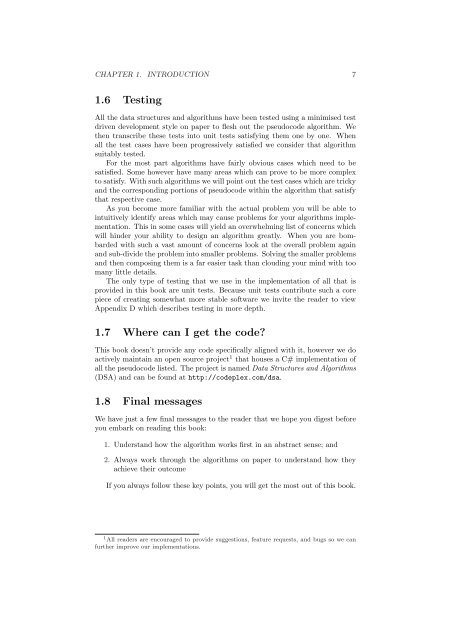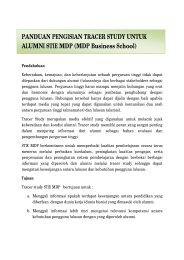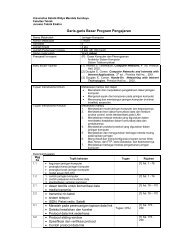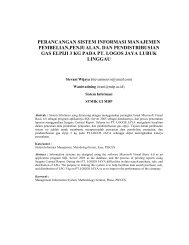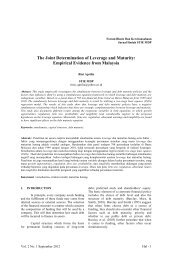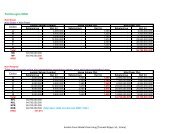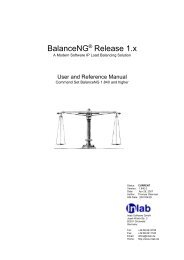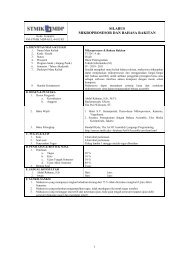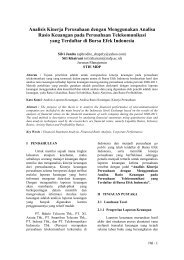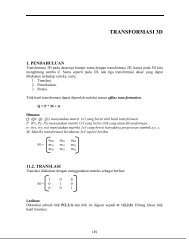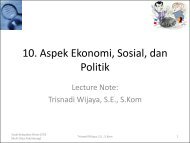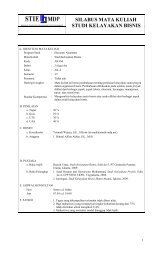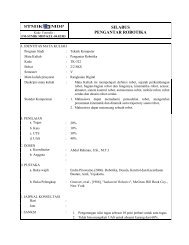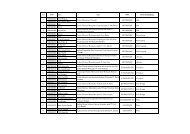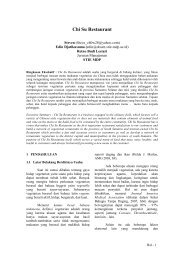Data Structures and Algorithms
Data Structures and Algorithms
Data Structures and Algorithms
- No tags were found...
Create successful ePaper yourself
Turn your PDF publications into a flip-book with our unique Google optimized e-Paper software.
CHAPTER 1. INTRODUCTION 71.6 TestingAll the data structures <strong>and</strong> algorithms have been tested using a minimised testdriven development style on paper to flesh out the pseudocode algorithm. Wethen transcribe these tests into unit tests satisfying them one by one. Whenall the test cases have been progressively satisfied we consider that algorithmsuitably tested.For the most part algorithms have fairly obvious cases which need to besatisfied. Some however have many areas which can prove to be more complexto satisfy. With such algorithms we will point out the test cases which are tricky<strong>and</strong> the corresponding portions of pseudocode within the algorithm that satisfythat respective case.As you become more familiar with the actual problem you will be able tointuitively identify areas which may cause problems for your algorithms implementation.This in some cases will yield an overwhelming list of concerns whichwill hinder your ability to design an algorithm greatly. When you are bombardedwith such a vast amount of concerns look at the overall problem again<strong>and</strong> sub-divide the problem into smaller problems. Solving the smaller problems<strong>and</strong> then composing them is a far easier task than clouding your mind with toomany little details.The only type of testing that we use in the implementation of all that isprovided in this book are unit tests. Because unit tests contribute such a corepiece of creating somewhat more stable software we invite the reader to viewAppendix D which describes testing in more depth.1.7 Where can I get the code?This book doesn’t provide any code specifically aligned with it, however we doactively maintain an open source project 1 that houses a C# implementation ofall the pseudocode listed. The project is named <strong>Data</strong> <strong>Structures</strong> <strong>and</strong> <strong>Algorithms</strong>(DSA) <strong>and</strong> can be found at http://codeplex.com/dsa.1.8 Final messagesWe have just a few final messages to the reader that we hope you digest beforeyou embark on reading this book:1. Underst<strong>and</strong> how the algorithm works first in an abstract sense; <strong>and</strong>2. Always work through the algorithms on paper to underst<strong>and</strong> how theyachieve their outcomeIf you always follow these key points, you will get the most out of this book.1 All readers are encouraged to provide suggestions, feature requests, <strong>and</strong> bugs so we canfurther improve our implementations.


